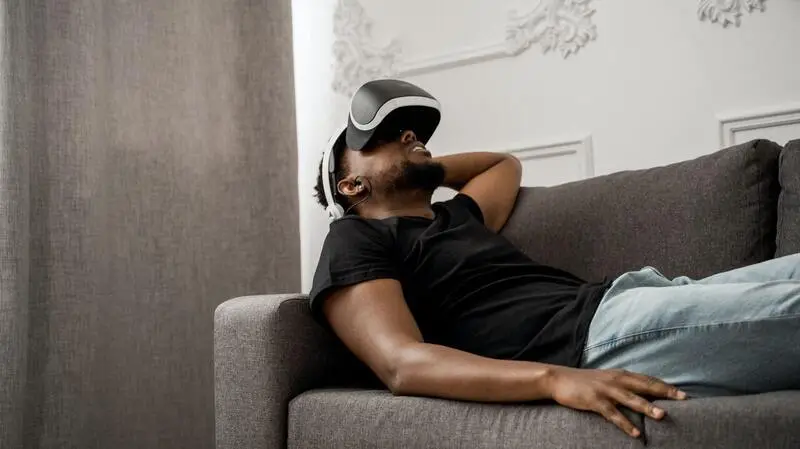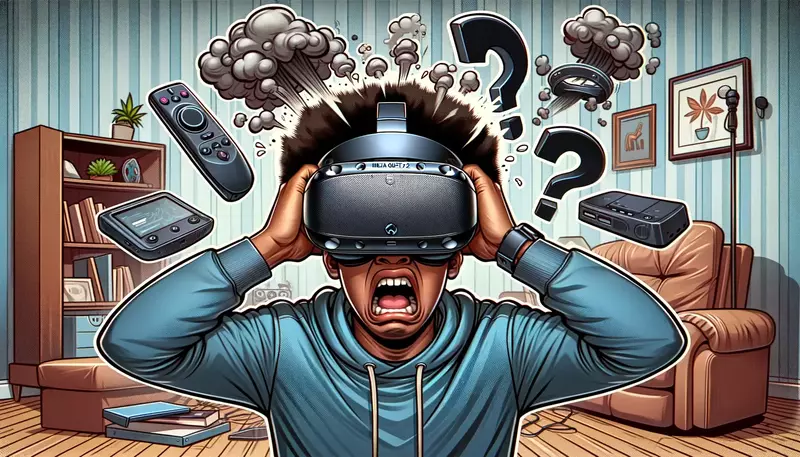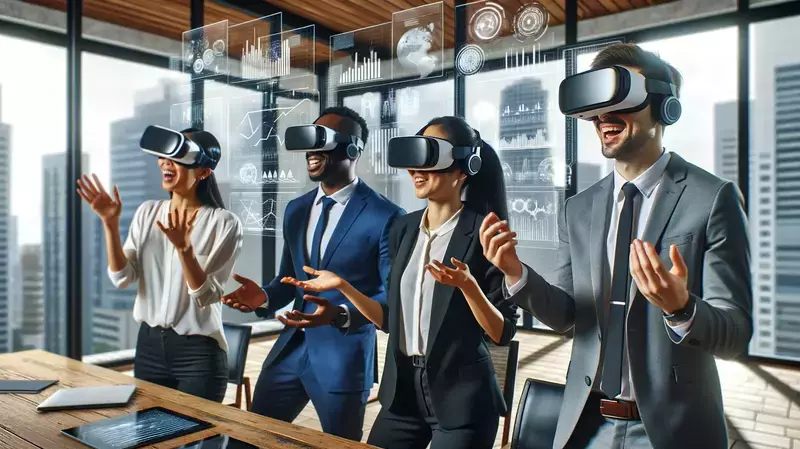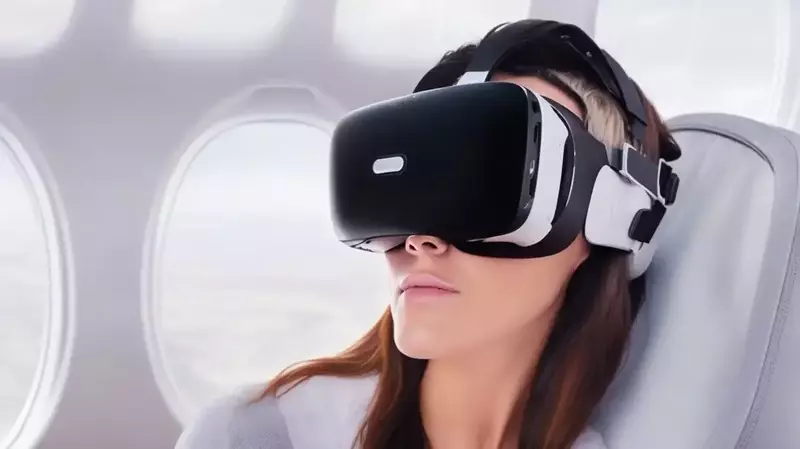The entertainment industry has been flooded with new and useful items like Virtual Reality. Can these technologies really be posing a challenge to traditional TV? Will virtual reality replace television in the future?
Yes, Virtual reality may be the future of Television. The importance of viewing television has dropped dramatically, and TVs may soon be obsolete. Applications like Netflix VR, YouTube VR, Bigscreen VR, and Oculus TV are rising in popularity and might be the start of a new era.
In this article, I will dive deeper into the topic of how VR would replace the TV in the future and how you can watch Tv using a VR headset.

Will Virtual Reality Replace Television?
While most executives in the technology and entertainment industries are thinking about VR, will it follow in the footsteps of 3D television, or will it, like the television and smartphone, become ingrained in our daily lives?
Oculus VR Inc.’s Rift and HTC Corp.’s Vive were the first modern VR headsets to hit the market in 2016. There is clearly a lot of interest in the technology since over 12 million VR headsets were delivered in 2016.
Large corporations like Qualcomm Inc., Microsoft Corp., Facebook Inc., Intel Corp., and others have entered or hinted at entering the industry by providing a platform, generating the content, or developing hardware.
This interest by many corporations and the fact that traditional TV is losing its meaning day after day implies that the future of TV could be in VR.
Television companies are wary but intrigued by the potential. There have been a number of VR spin-offs of popular series and some attempts at VR-only experiences.
To get a feeling of how popular and mainstream VR has gotten, a YouTuber called Get Hip made a poll on his channel with more than 65% of the 42,000 voters saying that VR finally has become mainstream.

READ MORE! 6 Best Virtual Reality Experiences In Orland Park (2022)
How Can You Watch TV Using a VR Headset?
Using a VR headset to watch TV offers up new worlds of entertainment possibilities.
Whether you’re using a basic smartphone-based headset or a whole-room VR system for your PC, you may view all of your favorite films in a virtual reality theater atmosphere or enjoy cutting-edge 360-degree entertainment.
There are a number of applications you can use to watch TV on VR. These include;
1. YouTube VR
The YouTube VR app is among the easiest methods to enjoy TV in virtual reality. Virtually all VR headsets, including the HTC Vive, PSVR, Oculus Quest, and others support it.
YouTube offers a growing collection of 360-degree programs, movies, and videos, in addition to your favorite content providers.
You may even rent movies to view in the comfort of your own home using your headset.
2. Using The Bigscreen VR
Bigscreen VR is a free program that works with a wide range of virtual reality headsets. This includes the Oculus Rift, HTC Vive, and Windows Mixed Reality.
It enables customers to rent 2D and 3D movies and view scheduled content in a virtual reality theater of their choice.
For headsets that don’t have access to standard streaming service apps like Netflix or Disney+, this program may function as a desktop mirror to stream Netflix from your computer to your VR headset.
It also allows you to connect with peers electronically for a virtual movie night. Local video files can also be viewed using Bigscreen by tech-savvy PC users with a VR headset.
This, however, necessitates some additional preparation and setup.
3. The Netflix VR
You may download the Netflix app from the specific app store for several VR devices, including Android-based smartphone headsets and the Oculus Rift/Quest if you have a Netflix subscription.
Netflix Living Room Mode allows you to view your favorite episodes in a comfortable virtual-reality living room, while the Void Mode eliminates the room entirely, allowing you to watch your show in any position.
4. The Oculus TV
Oculus TV enables you to watch Television and other entertainment in virtual reality. Browse through the collection of immersive videos and animations, or choose your favorite channel.
Oculus TV also gives shortcuts to independent Television and entertainment applications, as well as notifications when new content becomes available.
You can watch using the Pluto TV app on the Oculus TV directly.
Other options include Facebook watch, Red bull Tv, or Neverthink TV. You can also use standalone apps like Netflix, Showtime, Prime Video VR, ESPN, FandagoNow, among other apps.
Challenges That Face the VR As It Tries to Replace TV
Cost
The expense of networks is the first and foremost challenge. Adapting your studios, purchasing new and often untested cameras, and developing viable distribution and payment structures aimed at a completely unknown customer is no easy effort.
After all, this is money that might be used to improve services for the millions of people who already watch Television.
Many customers may also be turned off by the headsets’ price. If you want a good headset like the Oculus Quest 2, you’ll have to pay around $300 for the one with the least amount of storage.
The Current Technology
To make matters worse, technology is still in its early phases of development. Content creators must deal with clumsy first-generation technology that produces lower-quality visuals than a high-end PC.
The issue is how long it will take for VR processors to shrink in size, power consumption, and thermal density to the point where they can be built into a pair of glasses.
Despite the fact that it is only a matter of time, video gamers and other early adopters are disproportionately drawn to current technologies.
Studios will have to figure out how to incorporate 360-degree VR cameras into their current programs without disrupting them. For the time being, expect to see a few great demonstrations of what we’ll see more broadly in 5-10 years.
READ MORE! 18 Tips & Tricks For Oculus Quest 2 (You Need To Know!)
The VR Experience
Furthermore, ‘kinetosis,’ the dizzy feeling experienced while engaged in VR, is a significant barrier for customers who are used to the relaxed pleasure of watching Television.
It’s no surprise, for example, that the majority of Oculus material is under 10 minutes long.
The reality that few customers will be willing to wear VR headgear for hours at a time is just as important as the technological constraints of developing long-form content.
To avoid motion sickness, you need a screen with a refresh rate of 90 frames per second (fps). Earlier generation headsets, as well as the majority of headsets used today, are incapable of reaching this number.
However, newer headsets, such as the HTC Vive Pro 2, can finally deliver framerates of 90 Hz, which is the same as 90 frames per second. This enables the possibility of long sessions at a time like TV viewers mosty desire.
READ MORE! Will True Virtual Reality Ever Exist? (Explained!)
Final Thoughts
Although exciting, virtual reality television still has a way to go to attract the masses. The TV industry spent many years perfecting tried-and-true distribution tactics, and the VR sector has its own set of obstacles.
For the time being, though, mastering 360-degree TV, short-form VR entertainment, and fully interactive VR gaming may pave the road for future advances.

Espen
Espen is the Director of PursuitMeta and has written extensively about Virtual Reality and VR Headsets for years. He is a consumer product expert and has personally tested VR Headsets for the last decade.




Leave a Reply